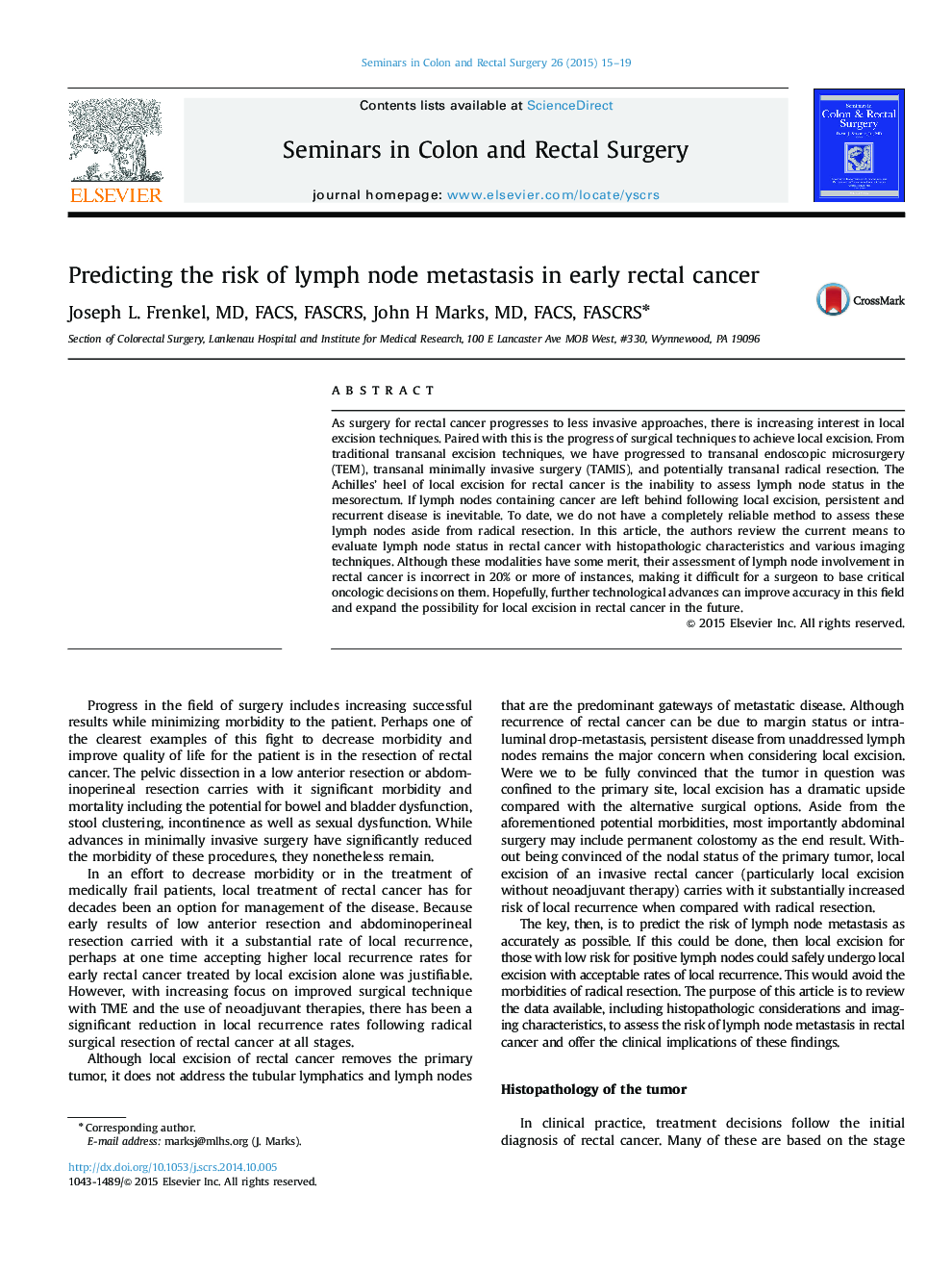| Article ID | Journal | Published Year | Pages | File Type |
|---|---|---|---|---|
| 3319320 | Seminars in Colon and Rectal Surgery | 2015 | 5 Pages |
Abstract
As surgery for rectal cancer progresses to less invasive approaches, there is increasing interest in local excision techniques. Paired with this is the progress of surgical techniques to achieve local excision. From traditional transanal excision techniques, we have progressed to transanal endoscopic microsurgery (TEM), transanal minimally invasive surgery (TAMIS), and potentially transanal radical resection. The Achilles' heel of local excision for rectal cancer is the inability to assess lymph node status in the mesorectum. If lymph nodes containing cancer are left behind following local excision, persistent and recurrent disease is inevitable. To date, we do not have a completely reliable method to assess these lymph nodes aside from radical resection. In this article, the authors review the current means to evaluate lymph node status in rectal cancer with histopathologic characteristics and various imaging techniques. Although these modalities have some merit, their assessment of lymph node involvement in rectal cancer is incorrect in 20% or more of instances, making it difficult for a surgeon to base critical oncologic decisions on them. Hopefully, further technological advances can improve accuracy in this field and expand the possibility for local excision in rectal cancer in the future.
Related Topics
Health Sciences
Medicine and Dentistry
Gastroenterology
Authors
Joseph L. MD, FACS, FASCRS, John H MD, FACS, FASCRS,
